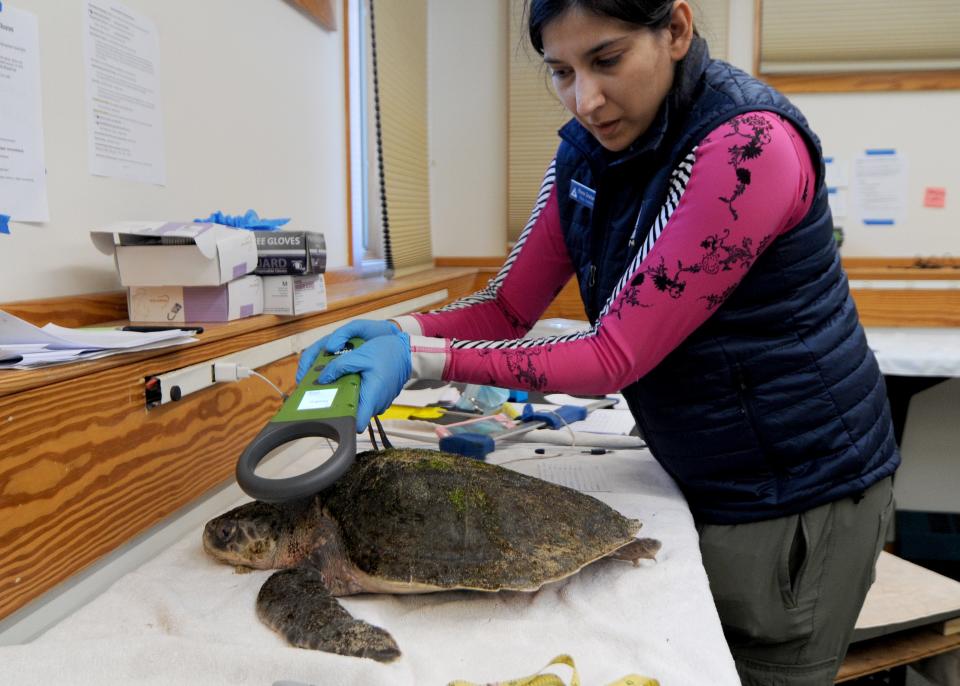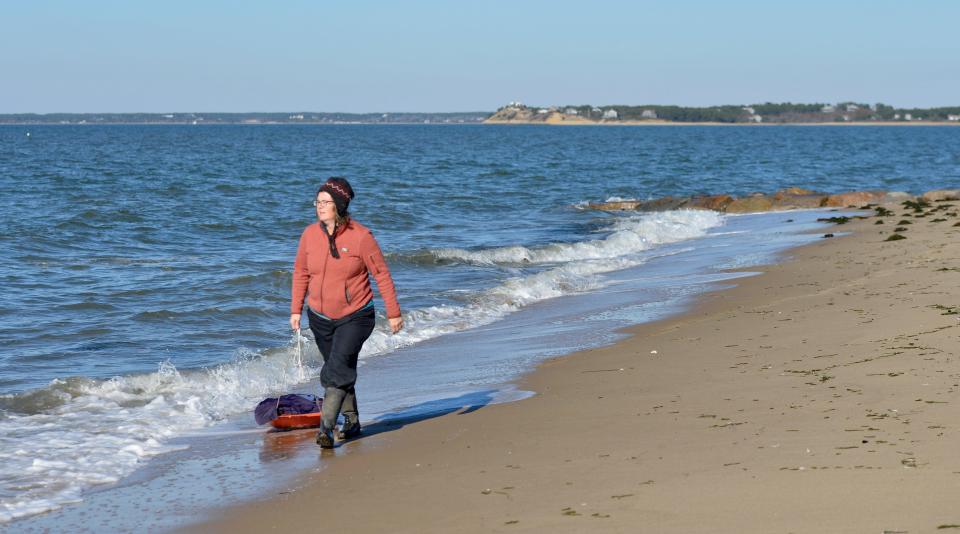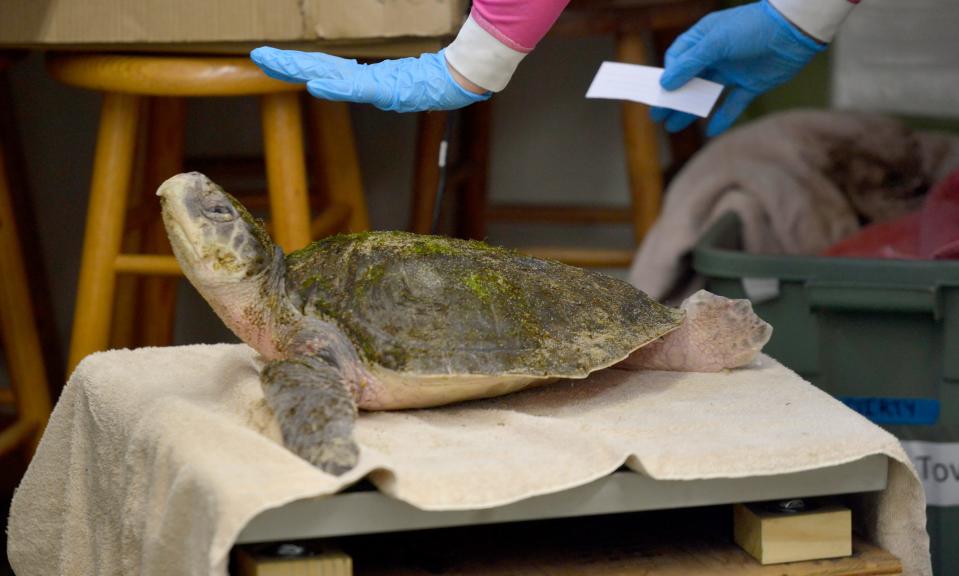Sea turtle rescue and recovery helps endangered turtles and science
EASTHAM ― Purpose is what drives Nancy Rabke. It’s a purpose set by the tides and seasons and boundaries of the town’s bayside beaches.
Rabke is a volunteer with Audubon’s turtle rescue and recovery team. She patrols beaches looking for cold-stunned sea turtles from November to January. For the last three days she and other members of the team have been active, seeking out Kemp’s ridley and green turtles washed ashore by the cold tides.
With water temperatures in the 50s, prevailing southwesterly and westerly winds, and a fairly sudden onset of cold temperatures (29 degrees on Saturday) volunteers have found 109 sea turtles so far. Most have been Kemp’s, but nearly 25% have been the larger green sea turtle, an extraordinary number, Massachusetts Audubon Cape Cod spokesperson Jeanette Kerr said.
On Tuesday, beaches in Orleans and Truro "were covered" with turtles. But Eastham has been the hotspot with a disproportionate number of cold-stunned turtles this fall, she said. The turtles tend to be found on the shorelines of Cape Cod Bay rather than along the outermost ocean beaches.

Wind direction plays a part in the equation.
“Eastham tends to get turtles, but this is extraordinary,” Kerr said. So far, 140 turtles have been entered into the database. Reports of more coming in could bring the total to 150. It’s a brisk start to the season.
Volunteers look for them at first light, high tides, and mid tides.
Rabke has been a trained volunteer since 2009. The retired teacher dresses for the weather, wears her Audubon ID around her neck and has downloaded the permit from the National Oceanic and Atmospheric Administration that shows she is trained for the task.
If she finds a turtle, she’ll put it above the wrack line, cover it with seaweed, and report its location. She carries banana boxes in her car – just in case she's asked to transport a turtle to the sanctuary.
"We don’t do anything with the turtles without checking in with the turtle hotline," she said.

In 2014, volunteers found more than 1,200 turtles on Cape beaches. With an estimated 8,000 to 10,000 female Kemp's ridley turtles in the world, the number of Cape strandings isn’t insignificant, Kerr said.
"Nowhere else in the world is there an annual mortality event like this," she said.
Kemp's are considered critically endangered. The females are the only ones who come ashore to nest. And nesting sites in Mexico and Texas are the only known places where females lay eggs.
The cold-stunned turtles found on Cape beaches are juveniles, brought north by the Gulf Stream. The outstretched curving arm of the Cape catches some unawares on their way south. Those rescued are rehabilitated and eventually flown south and released into warmer weather. But even the dead turtles are helping scientists.

It’s a rare opportunity for scientists to do necropsies on dead juvenile sea turtles. Juveniles don’t usually come ashore. Males never do. Females come ashore only to nest when they are 3- or 4-years-old, Kerr said.
Stable isotope analyses on tissue samples from the dead turtles can show where and what they have been eating. Scientists are trying to find non-invasive ways of sexing turtles, which is important in the context of climate change. Carcasses are requested by scientists in government and private agencies. And everything learned is important for building a knowledge base and sharing it, she said.
Heather Pilchard, another turtle rescue and recovery volunteer from Eastham, found an injured Kemp's on Silver Springs Beach on Monday night. It had wounds around its flippers, which Pilchard suspects it sustained when the tides tossed it against the rock revetments.
She was back out walking South Sunken Meadow Beach on Tuesday morning. Pilchard calls the work exciting as well as magical. Walking beautiful beaches, searching for turtles under night skies, finding and helping stranded turtles is fulfilling, she said.
"With all the bad news, it’s good to be able to do something," Rabke added. "It's one way of doing something concrete to help the situation with turtles."
Contact Denise Coffey at dcoffey@capecodonline.com. Follow her on Twitter: @DeniseCoffeyCCT.
Gain access to premium Cape Cod Times content by subscribing.
This article originally appeared on Cape Cod Times: Sea turtle rescue and recovery helps endangered turtles and science
